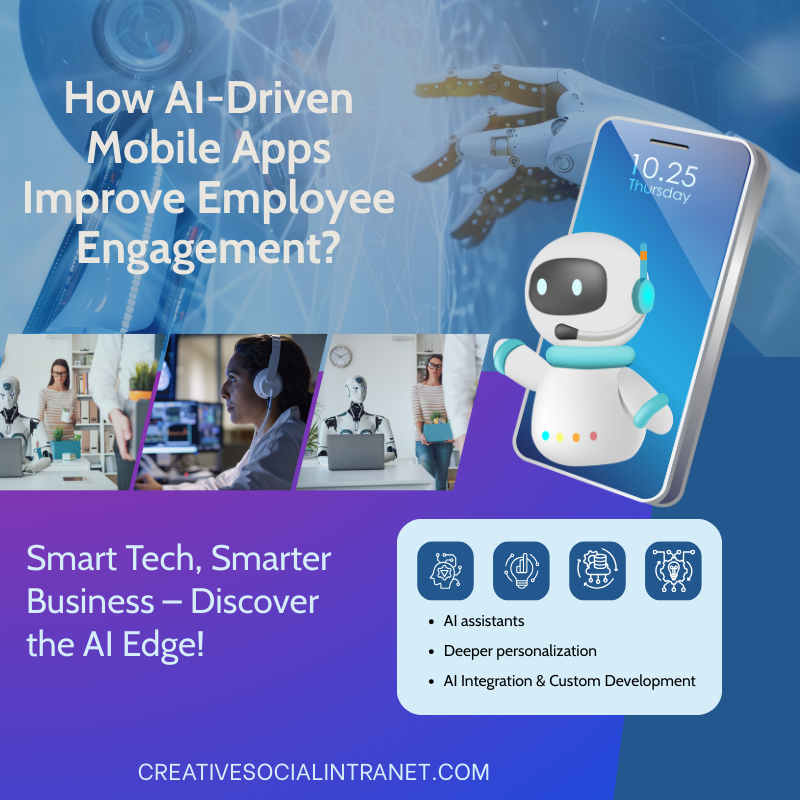Why would a company use an intranet?
To improve internal communication, streamline processes, and promote a collaborative work environment, intranets have become essential tools for businesses. The numerous advantages of intranets greatly increase the effectiveness of organizations. Let’s examine the main justifications for intranet implementation in businesses:
Centralized Data Storage Facility:
Importance: Intranets function as a centralized hub for the storage and retrieval of vital papers, resources, and organizational data.
Advantages: Promotes a single knowledge base, lessens information silos, and makes it easier to retrieve important facts.
Smooth Communication:
Importance: Intranets offer a regulated forum for talks, announcements, and internal communication.
Advantages: Promotes transparency, guarantees efficient communication throughout the company, and lessens the possibility that crucial communications will be missed.
Improved Collaboration:
Importance: Intranets facilitate teamwork by providing tools for document sharing, task coordination, and project collaboration.
Advantages: Enhances collaboration, shortens project schedules, and establishes a digital platform for the exchange of group expertise.
Document Management:
Importance: Intranets make secure access and version control possible, which helps to organize document management.
Advantages: Offers an organized method of document storage, guarantees that staff members are working with the most recent information, and avoids data redundancy.
Employee Engagement:
Importance: Social features, platforms for employee recognition, and interactive material all help to increase employee engagement on intranets.
Advantages: Positive work cultures are fostered by motivated, productive, and goal-aligned individuals, who are more likely to be engaged.
Support for Remote Work and Accessibility:
Importance: Intranets provide anytime, anywhere access to corporate resources, meeting the requirements of dispersed or remote staff.
Advantages: Increases adaptability by enabling workers to communicate, work together, and access data even in separate places.
HR and Employee Self-Service:
Importance: Intranets help HR departments operate more efficiently by enabling staff members to handle things like updating personal data, requesting leave, and accessing policies.
Advantages: Lessens administrative load, gives workers self-service options and guarantees effective and transparent HR procedures.
News and Announcements from the firm:
Importance: Intranets are a means of sharing updates, news, and significant announcements from the firm.
Advantages: Discussing company accomplishments and milestones, keeps staff members informed and in line with organizational goals, and fosters a sense of unity.
Training and Development:
Importance: Intranets offer a venue for e-learning courses, training courses, and ongoing professional growth.
Advantages: Promotes continuous learning and skill development and guarantees that staff members are prepared to adjust to changing job demands.
Task Automation and Workflow Efficiency:
Importance: Workflow tools and intranets are frequently integrated, which improves overall operational efficiency by automating repetitive operations.
Advantages: Lessens manual labor, lowers mistake rates, and optimizes corporate procedures, all of which boost output.
Safe Information Sharing:
Importance: Intranets give security priority by implementing access controls, guaranteeing that confidential data is shared only with individuals who are permitted.
Advantages: Reduces the risk of data security, protects company privacy, and fosters employee trust in the privacy of shared information.
Cost-Effective Communication:
Importance: When compared to more conventional techniques like printed materials or tangible announcements, intranets offer an affordable option for internal communication.
Advantages: Lowers expenses associated with communication, lessens environmental effects, and guarantees that all staff receive information on time.
Integration with Business Tools:
Importance: Contemporary intranets provide the ability to integrate with a range of business tools, establishing a unified online workspace.
Advantages: By integrating intranets with current CRM, project management, or collaboration technologies, a smooth digital environment is created, improving workflow continuity.
Employee Feedback and Surveys:
Importance: Intranets provide tools for gathering employee input, administering surveys, and assessing general contentment.
Advantages: Offers insightful information on employee sentiments, facilitates fast resolution of issues, and supports efforts for continuous improvement.
Flexible and Scalable:
Importance: Intranets may adjust to changing organizational requirements, supporting expansion and altering communication needs.
Advantages: Assures sustainability, enabling businesses to modify their intranet architecture to conform to changing business plans.
An organization would decide to put in place an intranet to take advantage of these many advantages, establishing a digital workspace that improves teamwork, communication, and overall productivity. An intranet is still a wise investment for businesses looking to create a connected, knowledgeable, and effective work environment since it is a flexible and adaptable tool.
Explore Creative Social Intranet
Boost Understanding with Quick Answers
Our Latest Intranet News and Articles

From Emails to Mobile Apps: A New Era of Company Communication
In the past, emails were the backbone of corporate communication. They were formal, reliable, and convenient for exchanging information within organizations. However, as the modern workplace evolved, with hybrid teams, instant messaging, and real-time collaboration, emails began to reveal their limitations. Slow response times, long threads, and cluttered inboxes made communication less efficient and more fragmented. Today, we’ve entered a new era where mobile apps and intelligent intranet systems, such as Creative Social Intranet, are transforming the way companies communicate, connect, and collaborate. They offer speed, accessibility, and engagement that emails can’t match, paving the way for smarter, more connected … From Emails to Mobile Apps: A New Era of Company Communication

How Mobile Apps Revolutionize Internal Communication?
In today’s digital-first workplace, communication is the lifeblood of every successful organization. With teams spread across locations, departments, and even time zones, keeping everyone informed and aligned has become a major challenge. Traditional methods, such as emails, bulletin boards, or intranet portals, are no longer sufficient to engage modern employees who are constantly on the move. This is where mobile apps come into play — transforming how companies share news, policies, and events with their workforce. At Creative Social Intranet, we’ve seen how mobile communication tools have revolutionized internal engagement by making information accessible, timely, and interactive. A well-designed mobile … How Mobile Apps Revolutionize Internal Communication?

How AI-Driven Mobile Apps Improve Employee Engagement?
Employee engagement has become a top priority for modern organizations. In an era where hybrid work, remote collaboration, and digital communication dominate the workplace, traditional engagement strategies are no longer enough. Employees expect seamless communication, instant access to information, and personalized experiences that help them feel valued. This is where AI-powered intranet software, combined with mobile apps, plays a transformative role. At Creative Social Intranet, we specialize in building intelligent platforms that not only connect employees but also empower them with tools that keep them engaged, productive, and motivated. Why Employee Engagement Matters More Than Ever? Engaged employees are the … How AI-Driven Mobile Apps Improve Employee Engagement?
